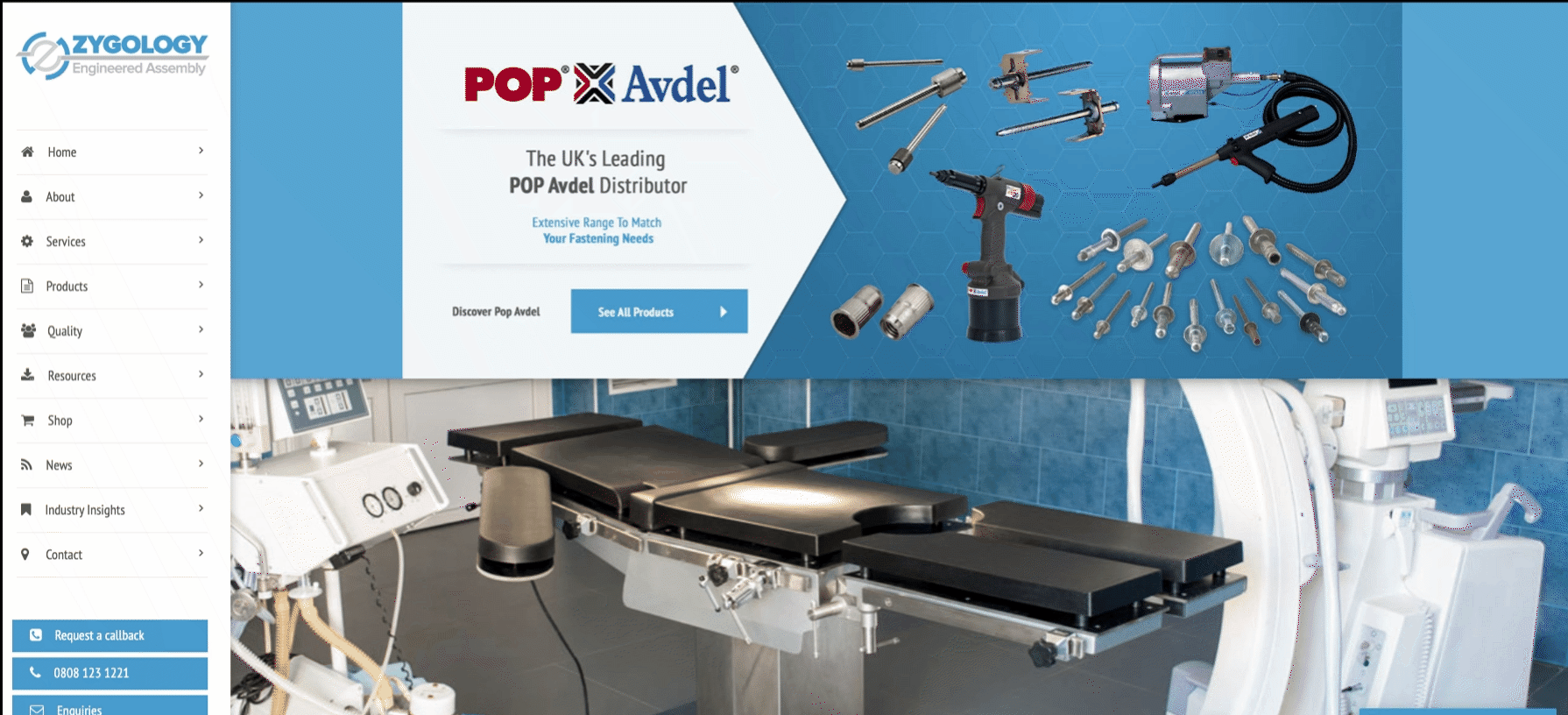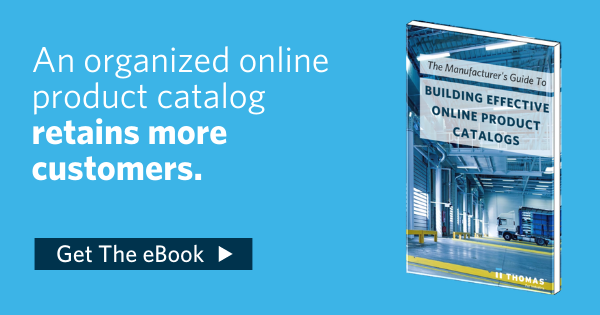How To Improve Your Supplier-Distributor Relationship
Brittany Asciolla May 11, 2021
A prospect that you’ve been chasing for months has been researching you as well, checking out your product catalog on a distributor’s website and downloading your CAD models. They’ve narrowed down their shortlist to you and a couple of your competitors, and now they’re visiting your website to gather additional details.
But when they arrive on your site, what they see doesn’t quite match what they saw on the distributor’s site. Part numbers are off, and specs aren’t aligning 100%. Plus, basic company information doesn’t match with what they read before and content looks outdated.
Reconciling the differences would take way too long, so instead they just cross you off their list. And you never even knew they were interested in the first place.
Unfortunately, this scenario plays out all too frequently and prevents the supplier and distributor from meeting their goals. In some cases, the scenario results in a dropped key customer and the existing customer base begins to diminish.
Is Your Supplier-Distributor Relationship At Risk?
Your suppliers are not just vendors and your customers are not just numbers on an invoice. Beyond the financial transaction, they are built on loyalty and trust. This relationship is one of the keys to getting you more business.
If you are like most product manufacturers, then you most likely have two distinct teams with two distinct systems managing your product data and your website. The first team is made up of engineers and technical experts, who use product configuration software and CAD to update, refine, and maintain your product data. The second is your marketing experts and website designers, who use a content management system (CMS) — like WordPress or Wix — to manage your website’s look, feel, navigation, and user experience. If these two groups, their partners, and their tools aren’t communicating to each other, then you’re not set up for success.
Imagine a buyer who comes to your website and orders 2000 rivets. There are only 1000 in stock, but the order still gets placed because there was no communication or content anywhere on your site to provide accurate data. Now you have to unfortunately let the customer know the bad news and communicate to your partner they also missed out on the opportunity.
Inaccurate product data is an issue that creates uncertainty and affects the trustworthiness of your brand. Additionally, you can't sell what users don't know you have. Knowing how much stock is available, how and when it gets shipped — and keeping that data up to date is key to inventory management and keeping your operations running smoothly. When there's a new product available, are your online systems able to handle the influx of demand? Do your users even know there's been a change in your product inventory? The same rapport you have with your partners over the phone and in-person needs to be present on your website reflected through accurate product data. Miscommunication about the availability of products and a lack of understanding of the supplier-distributor relationship leads to issues with your partners, issues for them with their partners — and ultimately lack of revenue for you.
Manufacturers, distributors, and customers all have different goals, but just because they don't align with yours doesn't mean you shouldn't support their needs. Many manufacturers and industrial companies are still struggling to digitally transform their businesses. And without the right technology platforms in place and open lines of communication between suppliers and distributors, buyers will turn to more agile competitors.
What Do B2B Buyers Want?
Buying habits are no longer the same as they were a few years ago. An online presence and eCatalog are not enough — even ISO standards are not enough to get specified. According to a recent Forrester Research Report, “By a factor of three to one, B2B buyers want to self-educate versus talking to sales representatives to learn about products and services. In addition, a majority of B2B buyers now say that buying online is more convenient than buying from a salesperson.”
This process of self-education can be incredibly difficult and time-consuming, but it's a buyer habit that creates an opportunity for you to create a sale. The easier you can make their jobs, the more likely it is for buyers to spec you into their projects. Most manufacturer websites include product information at a basic level. As an industry professional, you know that “basic” isn’t found in the vocabulary of engineers, designers, and procurement managers — they thrive on comprehensive product data like CAD models and drawings.
Read More: How To Meet The Needs Of Industrial Buyers
On the contrary, introducing doubt into the minds of your prospects — by presenting conflicting, outdated, or inconsistent information — is the quickest way to get eliminated from consideration. So in addition to having detailed data, B2B buyers expect your content to be up-to-date — at all times of the day.
73% Of B2B Buyers Are Tech-Savvy Millenials
Today’s B2B buyers simply don’t want to be sold to. They want to discover, research, and spec products online on their own before committing anything to their projects. Are you creating the right content for your audience and presenting it accurately?
Related Resource: Content Marketing For Industrial Companies
Setting Your Website For Product Data Alignment
To connect with more buyers and distributor partners, many suppliers build a modern website for their companies. But the leading manufacturers know that simply having a website isn’t enough to fulfill customers’ needs.
Here are a few basic signs you should upgrade your eCommerce website:
1. Your Website Isn’t Designed For Mobile Devices
Are you mobile-friendly? No, simply being able to access your site from a smartphone doesn’t count; your website needs to be specifically designed for mobile devices. The reality is that more than 70% of today's B2B professionals are techy-savvy millennials, and they're browsing your website on more than just a desktop. They're doing business on tablets and other mobile devices. And studies show that 57% of users won’t recommend a business with a poorly designed mobile site.
Keep in mind that when buyers are not working, they frequently shop online at consumer sites like Amazon. They expect the same simple, intuitive, and user-friendly experience when visiting your website.
That means your site needs to be easy to navigate, with a professional look and feel. Pages and images have to load quickly, while forms can’t be overly long and burdensome. When all of that is taken care of, you can integrate your product catalog.
Related Info: 7 Quick Ways To Check If Your Website Is Out-Of-Date
So make sure your website is responsive. In other words, make sure it’s designed to gauge the size of the screen or web browser your audience is using and adjust accordingly. This allows your site to be easily converted and viewed on any device, anytime, anywhere. Images and links need to perform just as well on a mobile phone as they do on a desktop computer.
A Telecom Supplier Company Increased Market Outreach After Updating Their eCommerce Experience 
2. Your Site Isn’t User-Friendly
Similarly, your site should also be intuitive and user-friendly. If it’s confusing, hard to navigate, slow to load, unhelpful, or just plain messy, you’ll just run people off. What’s the point of having a user interface if it’s frustrating, counterintuitive, or overwhelming? This will only encourage potential customers — and possibly even current clients — to explore your competitors’ offerings.
With that in mind, keep navigation as simple as possible, and provide the information they’re looking for. A search function should be easy to find and identify. Make sure site visitors can go exactly where they want to go — and find the valuable information they need — in just a click or two.
See Examples: Industrial Distributor Website Examples That Increase Sales
3. Your Site Isn’t Secure
Cyberattacks and other digital misdeeds are growing more and more commonplace. Failing to take at least the minimal steps to ensure your website is secure will be a huge red flag for the increasingly tech-savvy business community and your supplier-distributor relationship. Site visitors want peace of mind that their information is safe and encrypted. They don’t want malware seeping into their system because you weren’t diligent enough to take the proper steps for security.
At the very least, upgrade your site from HTTP to HTTPS if you haven’t done so already; the latter provides an encrypted platform where your information and visitors’ information will be kept safe. While you may not require users to enter sensitive information into forms — or maybe you don’t even have such forms on your site — you’ll still want to show you’re on top of things.
In this highly competitive market, OEMs must work even harder to stay ahead of the curve. The most successful OEMs bring greater efficiency to their customers’ design and sourcing processes by utilizing a centralized product information system.
The Benefits Of Product Data Alignment
Centralizing your data within a dynamic eCatalog allows your customers and vendor partners to discover and select products on your website more easily. But having all of your data in one place won’t make a tremendous difference if your data is unusable. Buyers need access to rich, detailed and configurable product data — and they need it in various formats. Enable the delivery of multi-format CAD models and sales drawings to ensure your products are properly spec’d and inserted directly into a customer’s project. Rich content from your eCatalog ensures that your customers receive the information they need, in the formats they expect.
Behind the scenes, you will need an intelligent and robust product data configuration solution that is easy to work with internally and produces easy-to-use output for end users.
You also want to make sure that all of your data is propagated accurately on the websites of your distributors. To accomplish that, your data syndication process needs to integrate with your configuration tools and centralized system.
Product data alignment between you, your vendor, your website and theirs, makes your company easy to do business with. The result is:
- More lead opportunities — and higher quality leads. With a library full of data that your customers are searching for, your business becomes the go-to when they need to complete projects. And when customers are happy, they tend to share the wealth with other buyers in their network. It's the customer delight that keeps on giving.
- Improved customer loyalty. When you make it easy for your buyers to do their jobs, they become confident in your brand and continue to do business with you.
- More distributor sales. Providing this richer and detailed product data to your distributors brings your products to the top of search results among competitors. More sales for them equals more business for you.
Zygology Ltd enhanced its customers’ online buying experience through the deployment of Thomas Connect™. With seamless integration of technical data, Zygology’s online store is always up-to-date in real-time, enabling a superior information-sharing relationship between manufacturer and distributor.

The Thomas Connect™ technology will also help companies in the UK find Zygology’s range of products more easily on local search engines. Higher search rankings mean an increased likelihood of getting found by more relevant buyers online. It's the ideal solution to expand market reach and tap into new industries.
Learn Quick Tips To Rank On Google's First Page With This 30 Day Planner
Sell More B2B Products The Better Way
To outperform other industrial sellers, you must view your product information as a strategic asset. Taking advantage of the most current product data solutions can transform the experience your customers have when they spec or source your products, making you the vendor of choice in a highly competitive online world. And by enhancing the way you exchange information about product changes and updates between your website and your partner's website, you remove another communication barrier you probably didn't even know you had.
What's Next: eCommerce Website Checklist For Distributors
Don't let lack of support be an issue that breaks your supplier-distributor relationship. Whether it's tactical or strategic, the relationship is a partnership that needs open communication and a product experience that works together. True success lies in a completely digital marketing approach, from inbound and content marketing to a data-driven eCommerce experience. Contact our product management experts to see how your website can solve your data challenges and create more growth opportunities or to learn more on your own, download our eBook The Manufacturer's Guide To Building An Effective Product Catalog.
Additional Resources For Suppliers And Distributors:
Did you find this useful?






![How To Meet The Needs Of B2B & Industrial Buyers [Updated 2022]](https://blog.thomasnet.com/hubfs/Brainstorm%20meeting%20understanding%20B2B%20buyers.png)




